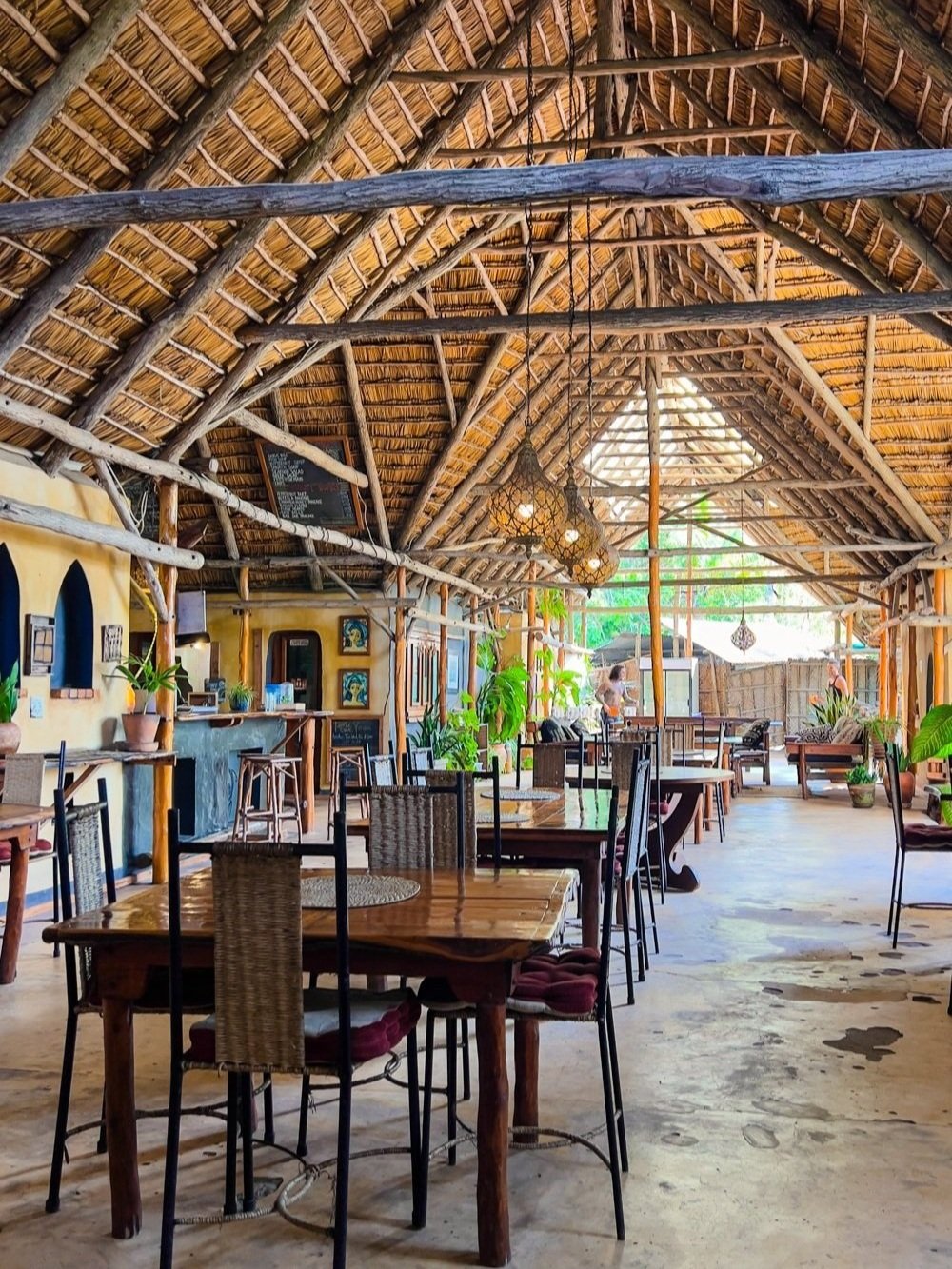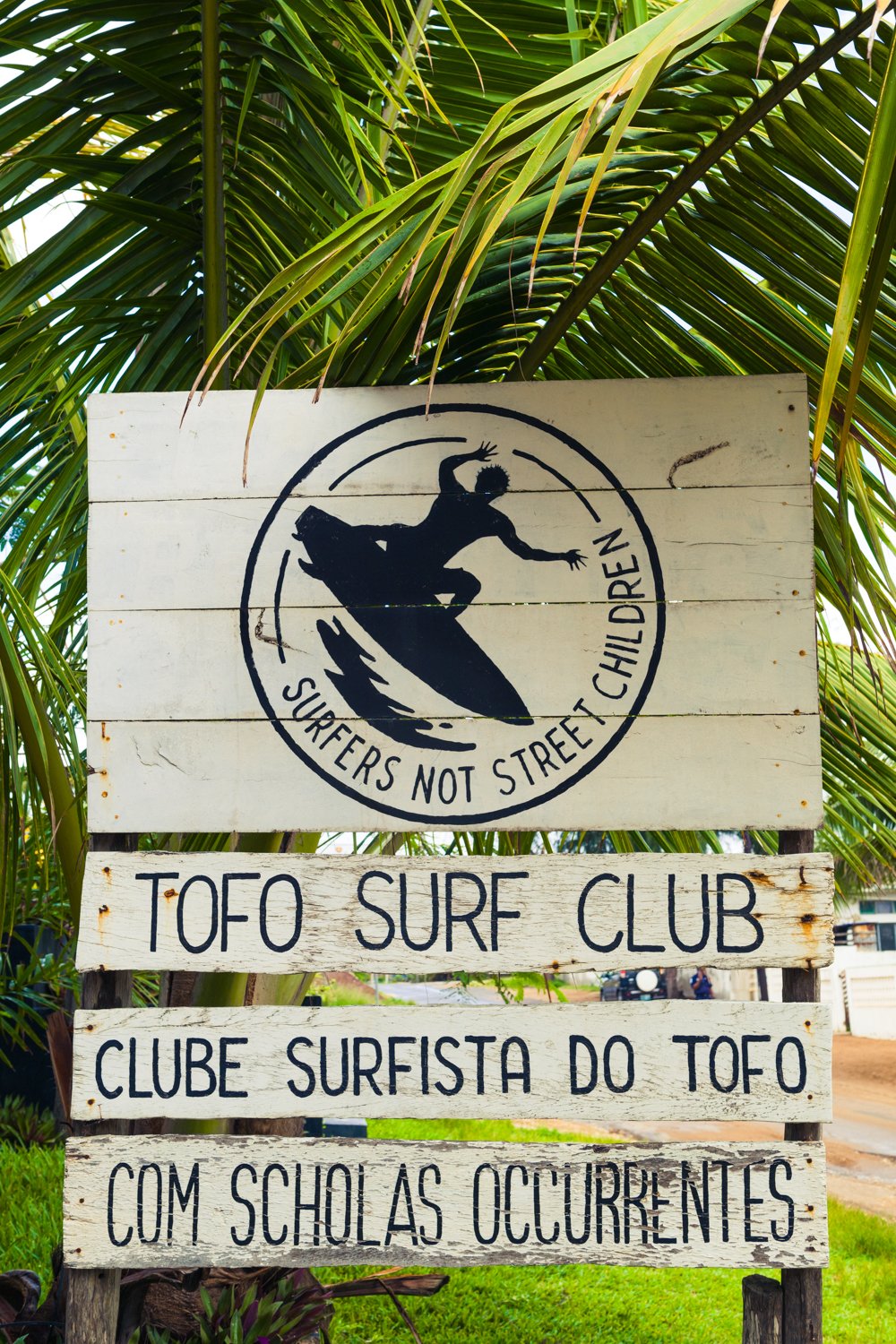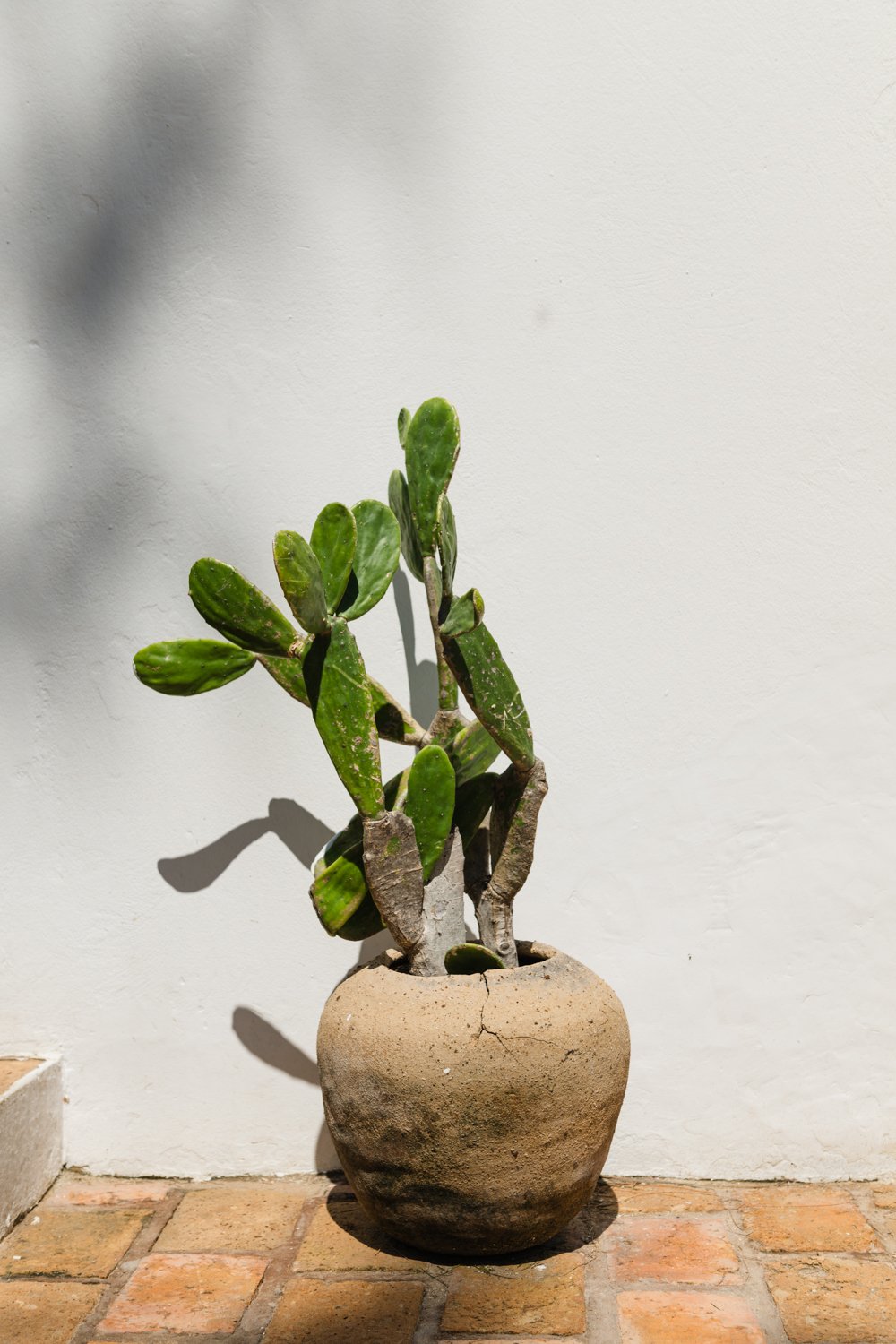Sandy feet, cold beers and giant sharks
I arrive in Tofo (pronounced Tofu), Mozambique on the heels of a moderate cyclone which knocked over some palm huts, redistributed beach sand across the lower elevation streets of the peninsula and left behind a good swell. The breeze in the air keeps the intense humidity on the move and after weeks of working in northern Uganda and on the Zimbabwe border my goals are simple. I want to get into the Indian Ocean, to do as little as possible while eating fresh food in the shade, and to swim with giants. (More on that later.) Tofo fits the bill perfectly.
My first few nights I stay at the Turtle Cove Lodge and Yoga Shala ($23) which is cheap, has a delicious fresh vegan menu, and has yoga every day. I am too lazy to partake in the latter but become hooked on the juices and salad bowls in the new Balinese style main lodge. In the evenings I enjoy a social beer by the firepit with local surfers who show up for the sunset view and company. If one is so inclined, the nearby Mozambeat Hotel has parties by their pool most nights, for guests and non-guests alike. I lean into sleeping in, relaxing by the pool with a book and walking on Tofinho beach. I am tempted by the surf lessons local instructors run over to offer but listen to my tired body and stay on plan. Besides, while it is mid-March, the sun is intense and the 82 Fahrenheit Indian Ocean does nothing to cool one off from heavy exertion, I justify. This is a place for lazy occupations, though I will admit the relaxed cruisers a few people take on longboards do call to me.
In the afternoons I walk through the town of Tofo, which straddles a humpback sand dune. The vibrant arts and crafts market sits along the flat of the dune to the north, and includes tourist goods, but low-key open bars and fresh food vendors line the sandy road in tin shacks. After being in non-touristed locales for a month, I find the mild entrepreneurial spirit of vendors startling, but everyone is friendly and relaxed.
Near the market I visit the Tofo Surf Club. The club is a thriving after-school club for local kids getting them into surfing, keeping them in school, and out of trouble. Some of Tofo’s lifeguards came from the Surf Club and it was founded in part by Sung Min Cho, a local and Mozambique’s first pro surfer.
If you are looking for extensive services, luxe shopping, and Michelin restaurants, Tofo is not your destination. The town has a welcoming vibe, western tourist hotels intermix with locals’ traditional huts, and people similarly intermix at the market and bars. Even though it is clearly a community which makes its money off tourists, I don’t feel unwelcome and stop to chat with people frequently who ask where I am from and about my life. Outsiders come to Tofo to surf, to dive the vibrant underwater ecosystem, and for the relatively undeveloped beach paradise vibe. And more than a handful stay on permanently. And if, you love a quiet barefoot town where you can grab a beer at the local street bar, get a fresh coconut at a market stand, and swim in sparkling seas, Tofo is a great spot. (It is wise to avoid high season in December and April when the town is crushed with South African holiday makers.)
I spend a significant portion of one afternoon in the shade of Ricardo Tivane’s thatched shop, Tivane Tailor Made [258-86-137-7751] chatting with him and going through all the beautiful clothing he has made. He is a talented tailor, with a thriving family business, using African wax prints to make colorful modern bags, hats, and clothing with minimal waste. If I had more cash on hand, I could have done some damage, but his family members rapidly altered a strappy tank top to fit me, and I take this and a lovely reversible sling bag with me.
Saturday, I move to Liquid Dive Adventures and Hotel ($88) for a few days to try out a beachside hotel. The cubist minimal white cabanas frame impossibly gorgeous views of the beach. I walk on Praia da Tofo beach in the early morning before the heat of the day. And I finally transition fully into beach mode and walk around in a bathing suit. This is a dreamy change from weeks of long pants in 100-degree heat while working in remote communities and I feel I have achieved the relaxation I came for. I jump alternate between jumping in the hotels refreshing pool and grabbing a latte or fresh coconut water at the café and reading my book on one of the shaded lounge chairs. It is perfection.
But the other reason I came to Liquid is because I want to go on an Ocean Safari. This is what originally drew me to the coast of Mozambique and to Tofo. After tossing my bags in the room, and a safety briefing, I am waiting on the beach with fins and mask in hand beside a huge rib boat being pushed on a trailer into the sea by a John Deere tractor. We assist in pushing it off the trailer and jump in as it heaves into the waves, and after a moment where it seems like we might just turn and roll, the engine starts. While Liquid Dive Adventures is primarily a dive outfit, I have decided to stay near the surface of the ocean and join a snorkel safari. Most importantly because the sea safari provides the rare opportunity to swim with whale sharks. Whale sharks are one of those mythical animals, like wild elephants and mountain gorillas, which cast an aura of magic and mystery, and Inhambane is a known feeding location. The rib boat follows the coast in a zig zag pattern, as we lookout across the surface of the water for signs of the giants all of us spackled in reef safe sunscreen against the powerful rays. Finally, a whale shark is spotted, an amorphous brown and white shape just under the surface of the water. The first time our guides call out whale shark I cannot even see what they are pointing at. Excited, and more than a little nervous to jump overboard in deep water in a region rich with sea life, we slip into the ocean as quietly as 10 people in fins can. When the bubbles clear, I am startled to see the 30 young male almost directly under me. It is massive, a constellation of white spots covering his expansive gray back as he cruises effortlessly beneath, a broad wide mouth open pulling in plankton.
We follow at a respectful distance as he feeds until he dives out of sight into the plankton rich waters (as an ethical tour group Liquid follows the 3 meters from the body 4 meters from the tail, and non-pursuit, no touch ethos which is intended to allow the animal to remain unstressed). He moves languidly, and I am able to dive an swim beside him, I watch his eyes and what I learn is his ear, it is deeply moving that such a large animal tolerates us, and in the case of this one even stays in one area with us circling. As he finally sinks into the depths the dappled spots on his back look like rays of light, and much like the first time I saw wild elephants in the twilight, he disappears into the dark like a gray ghost, there one minute, gone the next as if my eyes are deceiving me. I feel as if I have seen a unicorn, and in a way, I have. The majestic 15-meter plankton feeders are the largest fish in the world, endangered, and not very well understood.
The next three days, I rejoin Ocean Safaris, under the spell of the gentle giants and the privilege of being in their proximity. We see anywhere from one to four a trip, although there is no guarantee. I become better at spotting them, even finding one close by that we nearly miss on our last outing. Another time I find the group falls behind as I swim along with the animal, just him and I, as he sinks into the depths.
At night I join the other instructors and guests at the hotel restaurant and in town. Sunday night is the most happening night in Tofo with cars of locals lined up along the beach facing the bars, trunks open and radios with subwoofers and matching lights playing African and American classics. We drink Mac Mahon beers playing games with matchboxes and coins at plastic tables under palm trees, warm breezes off the Indian Ocean.
When my trip to Tofo comes to an end, I know I will miss the relaxed vibe of the town and being in the presence of these amazing creatures. I suspect that this is only the start of my time with whale sharks, and I hope, my time in Tofo.
Tofo can be accessed by a twice a week flight from Maputo to Inhambane Airport, or a 7-and-a-half-hour drive from the Mozambican capital. Its easy to get a taxi from the tiny airport to the coast, but if you are staying in a self catering cottages the supermarket is a few kilometers before Tofo proper. It is key to take out local currency, the metical, before arriving in Tofo as the ATMs throughout the country are frequently out of cash and cards are rarely accepted outside of hotels. In a pinch some hotels can convert USD into metical.
Things to Do
Tivane Tailor Made [258-86-137-7751]
Dathonga Art Gallery, Long Street
Liquid Dive Adventures and Peri Peri Divers
Surf instructors in front of Casa Amendoa or the Surf Shack
Visit the market stalls along Praia da Tofo
Eating
Tacos n’Friends
Turtle Cove Lodge and Yoga Shala Restaurant
Green Turtle Restaurant, north on Praia da Barra
Stay
Turtle Cove Lodge and Yoga Shala ($23)
Liquid Dive Adventures and Hotel ($88)
Sava Dunes ($210)

















